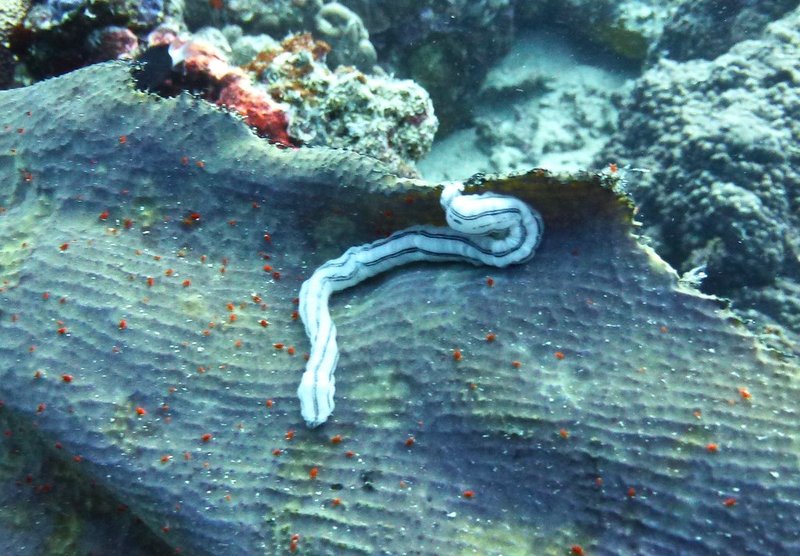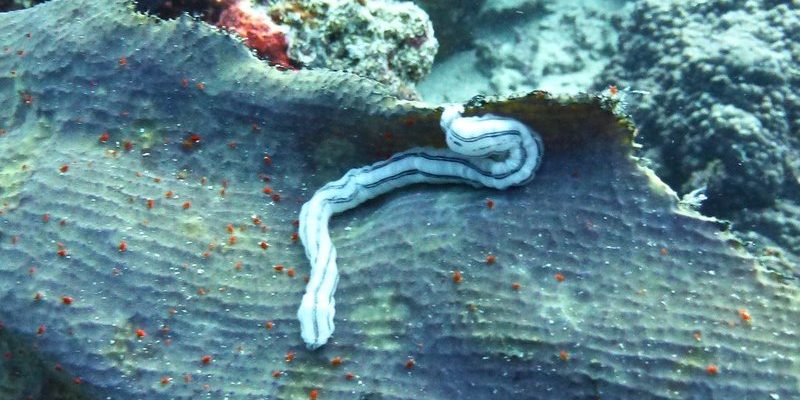
Now, you might be wondering, what exactly are ribbon worms? Imagine a piece of spaghetti that can squirm and dart about—you’re getting close! These fascinating creatures belong to the phylum Nemertea and are known for their ability to extend and retract their bodies. They aren’t just any ordinary worms; they have some remarkable adaptations that help them survive and thrive in coral reef systems. Let’s dive deeper into the world of ribbon worms and discover what makes them so special.
What are Ribbon Worms?
Ribbon worms are elongated, soft-bodied invertebrates that typically inhabit marine environments, especially coral reefs. They can vary in size, with some species measuring just a few centimeters, while others can grow up to several meters long! Their unique anatomy includes a long body and a proboscis that can shoot out to capture prey. Think of it as a secret weapon in their survival toolkit.
These worms come in various colors, ranging from bright oranges to deep browns, often blending in with their coral surroundings. Their **flexible bodies** allow them to hide within crevices in the reef, providing protection from predators. You might find them lurking under rocks or even in sandy bottoms. Understanding how these creatures fit into their ecosystem is crucial for appreciating the biodiversity of coral reefs.
The Role of Ribbon Worms in Coral Reef Ecosystems
Ribbon worms contribute to the health and balance of coral reef ecosystems in several ways. They are often part of the food web, serving as both predators and prey. Their diet primarily consists of small invertebrates, such as crustaceans and other tiny marine organisms. By keeping these populations in check, ribbon worms help maintain a healthy balance in the reef.
Moreover, ribbon worms play a role in nutrient cycling. When they feed, they help break down organic matter, which enriches the sediment and promotes the growth of algae and other organisms. This nutrient recycling is essential for the overall health of the reef. By hosting a diverse array of species, coral reefs can better withstand environmental changes, such as rising temperatures or pollution.
Feeding and Behavior
So, how do ribbon worms actually catch their prey? Well, they have a fascinating feeding mechanism. Using their specialized proboscis, they can capture unsuspecting prey quickly. When they spot a potential meal, they whip out their proboscis, which can be sticky or even armed with tiny barbed structures. This allows them to snag small crustaceans or mollusks, which they then pull back into their bodies for digestion.
But it’s not just about catching food; ribbon worms are also known for their ability to **regenerate** lost body parts. If they lose a segment due to a predator attack, they can regrow it over time. This remarkable regeneration ability is another reason these creatures are so intriguing and important within their ecosystem.
Challenges Faced by Ribbon Worms
Like many marine species, ribbon worms face several challenges in coral reef systems. One significant threat comes from habitat destruction caused by climate change, pollution, and human activity. Coral reefs themselves are being damaged, reducing the available habitat for ribbon worms and other marine organisms.
Additionally, ocean acidification, resulting from higher carbon dioxide levels, can impact the health of coral reefs. As these reefs decline, the delicate balance of the ecosystem is thrown off, affecting not only ribbon worms but countless other species that rely on coral reefs for survival.
Understanding Coral Reef Health
The health of ribbon worms can actually serve as an indication of the overall health of coral reef ecosystems. Since they are sensitive to changes in water quality and habitat conditions, observing their populations can help scientists gauge the impact of environmental stressors on the reef.
By studying ribbon worms and how they interact with their environment, researchers can gather valuable data to help protect coral reefs from further degradation. This information can inform conservation strategies and highlight the importance of preserving these vital ecosystems.
In the grand tapestry of coral reef ecosystems, ribbon worms might not be the most glamorous or well-known residents, but they play crucial roles that shouldn’t be overlooked. From maintaining the balance of marine life to contributing to nutrient cycling, these slender creatures are integral to the health of their environment.
As we continue to explore and understand marine ecosystems, recognizing the value of even the smallest inhabitants—like ribbon worms—reminds us of the interconnectedness of life in our oceans. Protecting these ecosystems means safeguarding a diversity of species and the delicate balance they maintain. So next time you think about coral reefs, remember the hidden wonders, like ribbon worms, that help make these underwater worlds so vibrant and essential.

